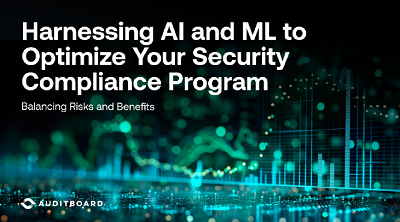
Guide: Selecting an AI Solution for Your InfoSec Program
While artificial intelligence (AI) has existed since 1956, AI applications truly went mainstream with the release of ChatGPT. With the barriers to entry for technology providers effectively lowered, the impact has been widespread. Today, there are countless AI-powered solutions claiming they can help you streamline and optimize information security processes.
There are several areas where businesses are successfully leveraging AI in their security and compliance programs. Specifically, generative AI (GenAI) solutions and machine learning (ML) models have posed the most promise in driving efficiencies and optimizations for information security teams. GenAI, where the AI can make content completion suggestions when a user is typing in the interface, are being used to automate activities involving writing, such as mapping compliance frameworks, writing questions and controls, and creating narratives and reports. ML, which uses algorithms trained on available data to emulate logical decision-making, is being used for activities involving detection of intrusions and malicious behavior.
However, AI is a double-edged sword, as for every potential benefit it can provide to your business, it also brings new risks. Some of the biggest threats involve compromised intellectual property and false positives and negatives that can impact business operations. In short, purchasing an AI solution always involves tradeoffs. To decide whether this tradeoff makes sense for your business, you must calculate all the potential benefits, risks, and “what can go wrongs” of integrating AI into your security processes. Download a copy of Harnessing AI and ML to Optimize Your Security Compliance Program: Balancing Risks and Benefits for resources to help you evaluate AI solutions, including existing frameworks and regulations that can help, questions to ask, and a best practice checklist.

